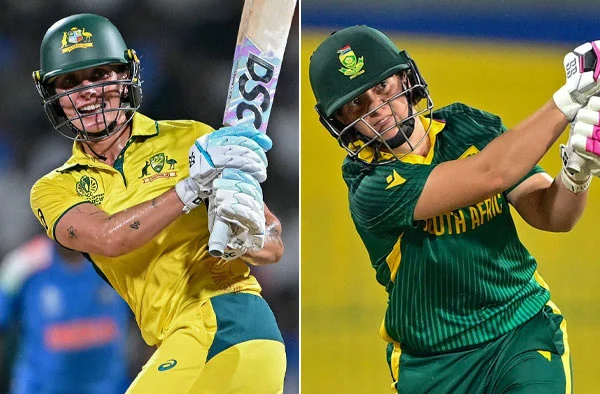Women’s World Cup 2025 Sets a new Record with Most Sixes in a Single Season

The 13th ICC Women’s ODI World Cup 2025, co-hosted by India and Sri Lanka, has already rewritten history well before the grand finale. Following India’s euphoric five-wicket victory over Australia in the second semi-final at the DY Patil Stadium in Navi Mumbai on October 30, the tournament reached an unprecedented 124 sixes, a new record for the most number of sixes struck in a single edition of the event. The previous milestone stood at 111 sixes from the 2017 edition in England, now comfortably eclipsed in just 29 matches this year.
Women’s World Cup 2025 Sets a new Record with Most Sixes in a Single Season; PC: Getty
It marks a striking evolution from the modest beginnings of the competition. The inaugural edition in 1973 saw just a single six cleared in 20 matches, while the 1978 Indian edition again witnessed one solitary maximum in six games. The 1982 and 1988 tournaments combined for only three sixes across 53 matches. Through the 1990s, the growth of power-hitting began to flicker, with the 1993 and 1997 editions together producing eight sixes.
By the turn of the millennium, players began to expand the boundaries of the women’s game; eight sixes in 2000 in New Zealand became 15 in South Africa in 2005. The 2009 event in Australia saw a surge to 47, and by 2013 in India, that number rose to 67. England’s 2017 home edition famously set the record at 111, which stood until India’s high-octane 2025 edition shattered it amid fearless batting and lightning-fast outfields.
This booming surge in boundary-hitting reflects not just improved fitness and bat speeds, but also the tactical bravado defining the modern women’s game. Players now approach the ODI format with a T20 mindset, and the 2025 tournament has been a celebration of that power evolution.
The DY Patil Stadium witnessed an electric night where India halted Australia’s 15-match unbeaten World Cup streak, stretching over eight years, in an unforgettable record run chase. Set a daunting 339 to win, the highest-ever target chased down in any ODI World Cup knockout match, men’s or women’s, India reached the finish line with five wickets in hand, and 9 balls to spare, fueled by Jemimah Rodrigues’ maiden ODI World Cup hundred (127*) and Harmanpreet Kaur’s commanding 89.
Earlier in the contest, Phoebe Litchfield’s majestic 119, complemented by twin fifties from Ellyse Perry (77) and Ashleigh Gardner’s (63) late fireworks, powered Australia to their mammoth 338, also the highest total in a Women’s World Cup semi-final. For India, the left-arm spin duo of Shree Charani and Radha Yadav chipped away with crucial breakthroughs, while Amanjot Kaur turned the tide by dismissing Litchfield before she could further accelerate. Despite Australia’s dominance with the bat, the 14 sixes struck in the match added further gloss to the record-shattering tally for the tournament.
Chasing history, Smriti Mandhana and Shafali Verma’s brisk start set the stage before Jemimah Rodrigues and skipper Harmanpreet Kaur took charge, adding a monumental 167-run stand for the third wicket, the highest-ever partnership by India in a World Cup knockout match. Rodrigues anchored the innings with precise placement and calm under pressure, while Kaur’s authoritative strokes through midwicket and cover kept the momentum alive. Even after the skipper’s dismissal for a valiant 89, Rodrigues held firm, joined by Deepti Sharma and later Richa Ghosh, to take India to the brink. A composed cameo from Amanjot Kaur sealed the chase, India reaching the target in the 49th over.
Rodrigues remained unbeaten on 127, becoming the first player to register a century in a successful run chase in a Women’s World Cup knockout and rightly earning the Player of the Match award. The triumph not only carried India into their third World Cup final but also symbolised a generational shift, one where Indian batters are scripting the narrative with audacious confidence and power-hitting finesse.
As the 2025 edition stands at 124 sixes heading into the finale between India and South Africa at the DY Patil Stadium on November 2, the spectacle of power-hitting has redefined what the women’s ODI game represents. Laura Wolvaardt’s epic 169 in the first semi-final and Jemimah Rodrigues’ composed hundred in the second exemplify how modern aggression and classical technique are now twin hallmarks of the World Cup stage.
When the final ball is bowled on November 2, regardless of who lifts the trophy, the 13th ICC Women’s ODI World Cup will be remembered not only for its riveting contests but also as the edition that launched the women’s game into a new dimension of fearless six-hitting.
Loves all things female cricket





